Vitamin B6 (Pyridoxine) in Sports: Science, Practical Use, and How to Optimize Performance Vitamin B6 (Pyridoxine) in Sports: Science, Practical Use, and How to Optimize Performance Detailed evidence-based guide for athletes, coaches, and fitness-minded people. Key Roles Evidence & Studies Food Sources Dosage & Safety Practical Protocol FAQ Introduction Vitamin B6 (collective name for pyridoxine, pyridoxal, pyridoxamine and their phosphorylated forms; active coenzyme = pyridoxal 5'-phosphate — PLP) is a water-soluble B vitamin that participates in more than 100 enzymatic reactions in human metabolism. For athletes and active people, B6's roles in amino-acid metabolism, glycogen utilization, neurotransmitter synthesis, and hemoglobin production make it especially relevant to performance, recovery, and resilience. This article explains those mechanisms, summarizes the scientific e...
Natural Skincare: 7 Ingredients You Already Have in Your Kitchen
Turn pantry staples into powerful, science-backed skincare. Learn what works, for which skin types, and how to use each safely—complete with dermatologist-informed tips, ingredient swaps, and recipes you can mix in minutes.

By VitalWell Hub ·
Why Natural Skincare (and When Not To DIY)
Short ingredient lists. Budget-friendly. And often gentle. That’s why many people love kitchen-based skincare. Used correctly, common pantry ingredients can hydrate, soothe irritation, support the skin barrier, and brighten dullness. But “natural” is not a synonym for “risk-free.” Essential rules apply: patch test everything, avoid known allergens, keep mixtures fresh, and never use harsh scrubs that can create micro-tears.
This guide blends time-tested home remedies with insights from dermatology. We reference the American Academy of Dermatology (AAD), peer-reviewed studies, and trusted health resources like the Cleveland Clinic to keep things practical and safe. If you have eczema, acne that’s inflamed/cystic, rosacea, or any active skin disease, consult your clinician first.
“Natural” can be gentle—but results come from consistency, correct concentrations, and respecting the skin barrier.
How to Patch Test & Use Safely
- Patch test: Apply a pea-sized amount behind the ear or inner forearm for 24–48 hours. Watch for redness, burning, swelling, or itch.
- Keep it fresh: Make single-use batches; discard leftovers. Use clean bowls/spoons; wash hands first.
- Mind the eyes: Avoid the eyelid margin. If contact occurs, rinse with cool water.
- Sun smart: Some ingredients (e.g., turmeric, AHAs in yogurt) can increase sun sensitivity. Use broad-spectrum SPF 30+ daily.
- Know your triggers: Dairy, pollen-related plants, or salicylate sensitivity can react with certain ingredients.
Love holistic wellness? Explore our related guides: Lifestyle Habits & Metabolic Health and Lifestyle & Brain Health.
The 7 Kitchen All-Stars (Science-Informed DIY Recipes)
Each ingredient below includes what it does, best for, exact recipes, how to use, and cautions. Save or screenshot your favorites—then rotate them based on your skin’s needs.
1) Honey — Humectant Hydration & Gentle Antimicrobial Support
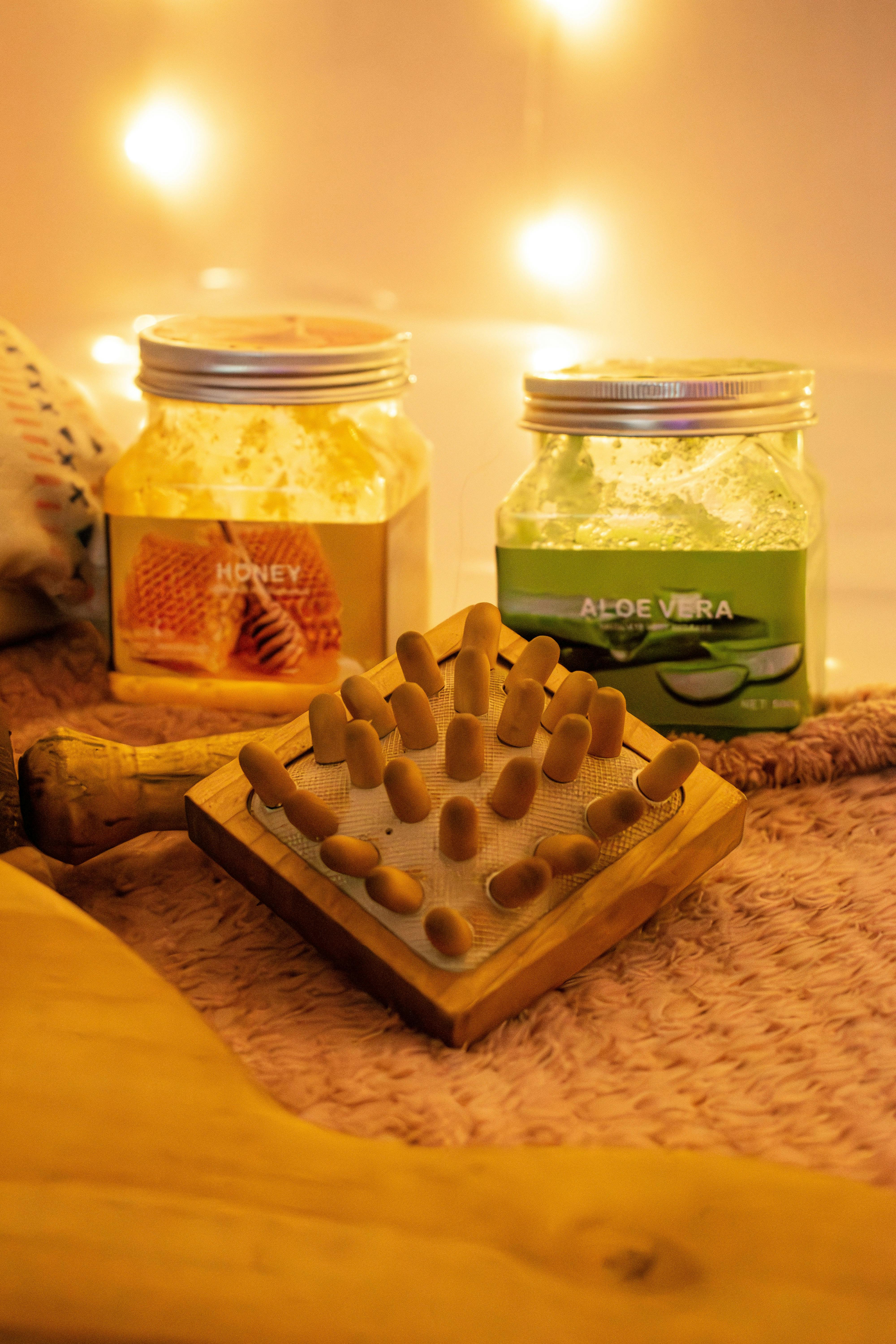
Honey is a natural humectant: it attracts water into the stratum corneum, supporting plumpness and softness. Certain honeys, like Manuka, also show antimicrobial activity in lab settings. For everyday skincare, raw, pure honey works well for most skin types.
Best for: Dry, combination, and sensitive skin. May calm mild redness or tightness.
Quick Recipes
- Hydrating Cleanse: Massage 1 tsp honey on damp face for 60–90 seconds. Rinse with lukewarm water.
- Honey-Oat Soothe Mask: 1 tsp honey + 1 tsp finely ground oats + a few drops water. Apply 10–15 min; rinse.
- Blemish Dab: Spot-apply a rice-grain amount on a cleansed area for 10 min; rinse.
How to use: 2–4× weekly as a mask; daily as a gentle cleanse step if tolerated.
Cautions: Avoid if allergic to bee products. Sticky residue can trap debris—always rinse fully.
2) Oatmeal — Barrier Loving & Itch-Soothing
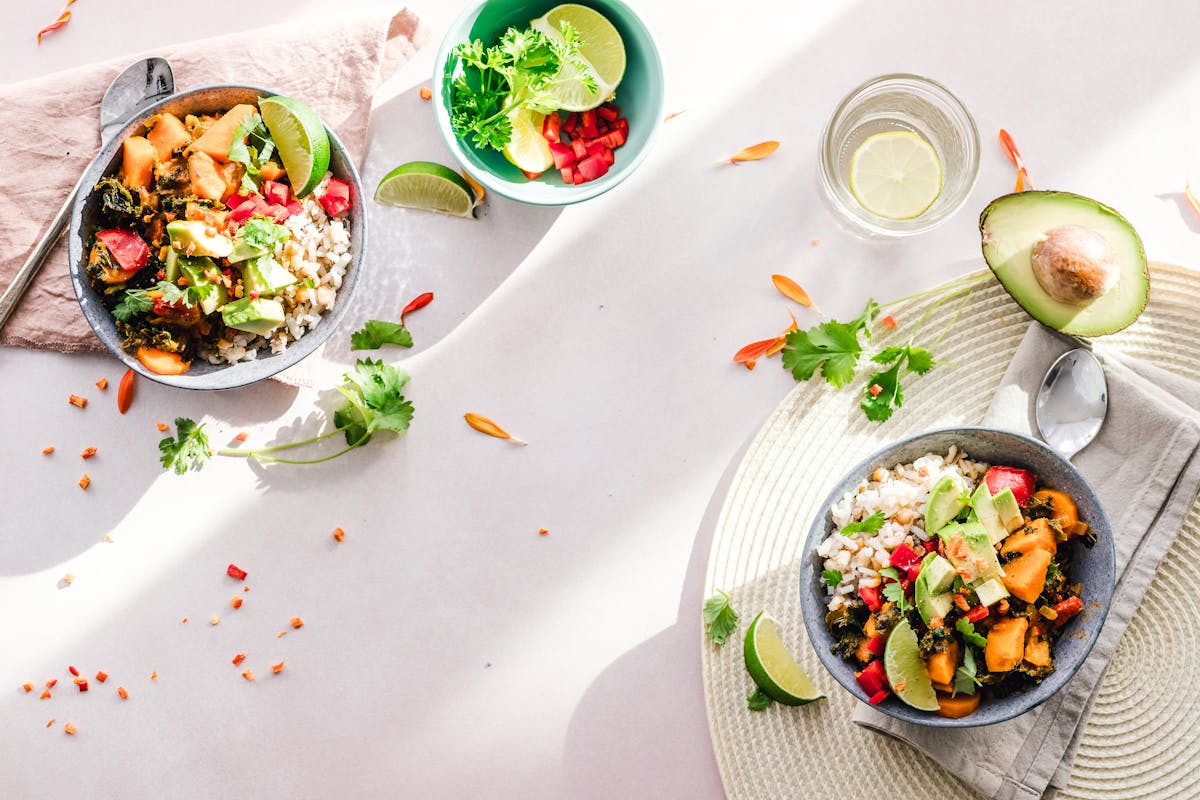
Colloidal oatmeal is widely used in dermatology for soothing dry, itchy, and irritated skin. Its beta-glucans and avenanthramides can help calm the look of redness and support the barrier.
Best for: Dry, sensitive, eczema-prone, or wind-chapped skin.
Quick Recipes
- Colloidal Oat Paste: Blend oats to a fine powder. Mix 1 tsp with 1–2 tsp cool water to a loose paste; apply 10–15 min.
- Oat Milk Cleanser: Steep 1 tbsp ground oats in 50 ml warm water for 10 min; strain and use the milky liquid as a rinse.
- Oat-Honey Calm: 1 tsp oat powder + 1 tsp honey; apply 10 min, then rinse.
How to use: Masks 2–3× weekly; as a rinse as needed.
Cautions: Avoid if you have an oat allergy or celiac disease with high sensitivity to topical oats.
3) Yogurt — Gentle Lactic Acid Brightening
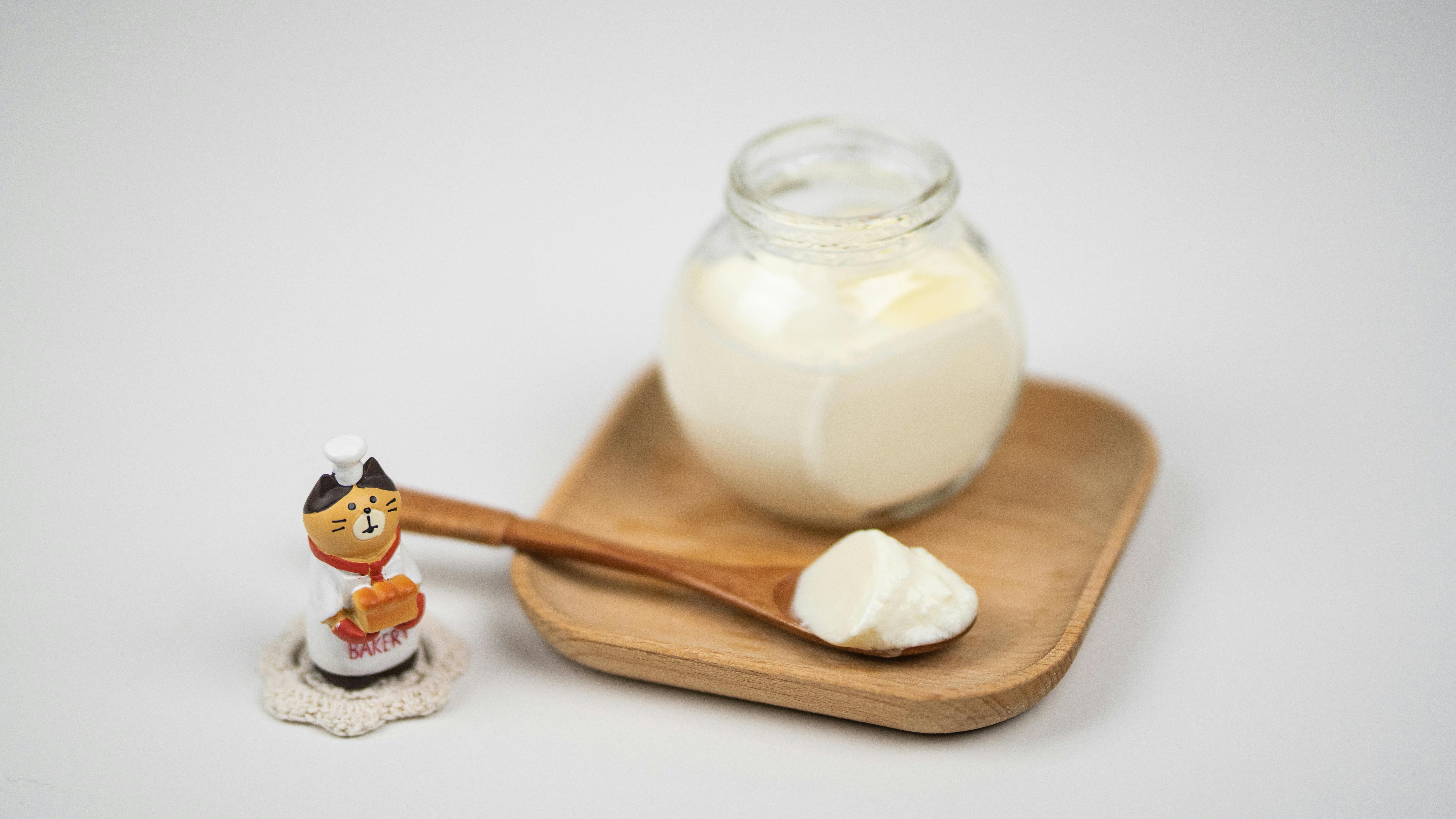
Plain, unsweetened yogurt contains lactic acid, a gentle alpha-hydroxy acid that can help smooth texture and brighten dullness with regular use. It also has a naturally soothing feel thanks to fats and proteins.
Best for: Normal, dry, and dull skin; can help soften rough patches.
Quick Recipes
- Simple Brightening Mask: 1 tsp plain yogurt; apply thinly for 5–8 min; rinse. Start short to test tolerance.
- Yogurt-Honey Glow: 1 tsp yogurt + 1/2 tsp honey; 8–10 min; rinse.
- Yogurt-Oat Smooth: 1 tsp yogurt + 1 tsp fine oat powder; 10 min; rinse.
How to use: 1–3× weekly. Increase time slowly if no stinging or lingering redness.
Cautions: Avoid flavored/sugary yogurts. Skip if dairy-sensitive or prone to fungal acne (consider patch test).
4) Turmeric — Complexion Evenness & Antioxidant Support
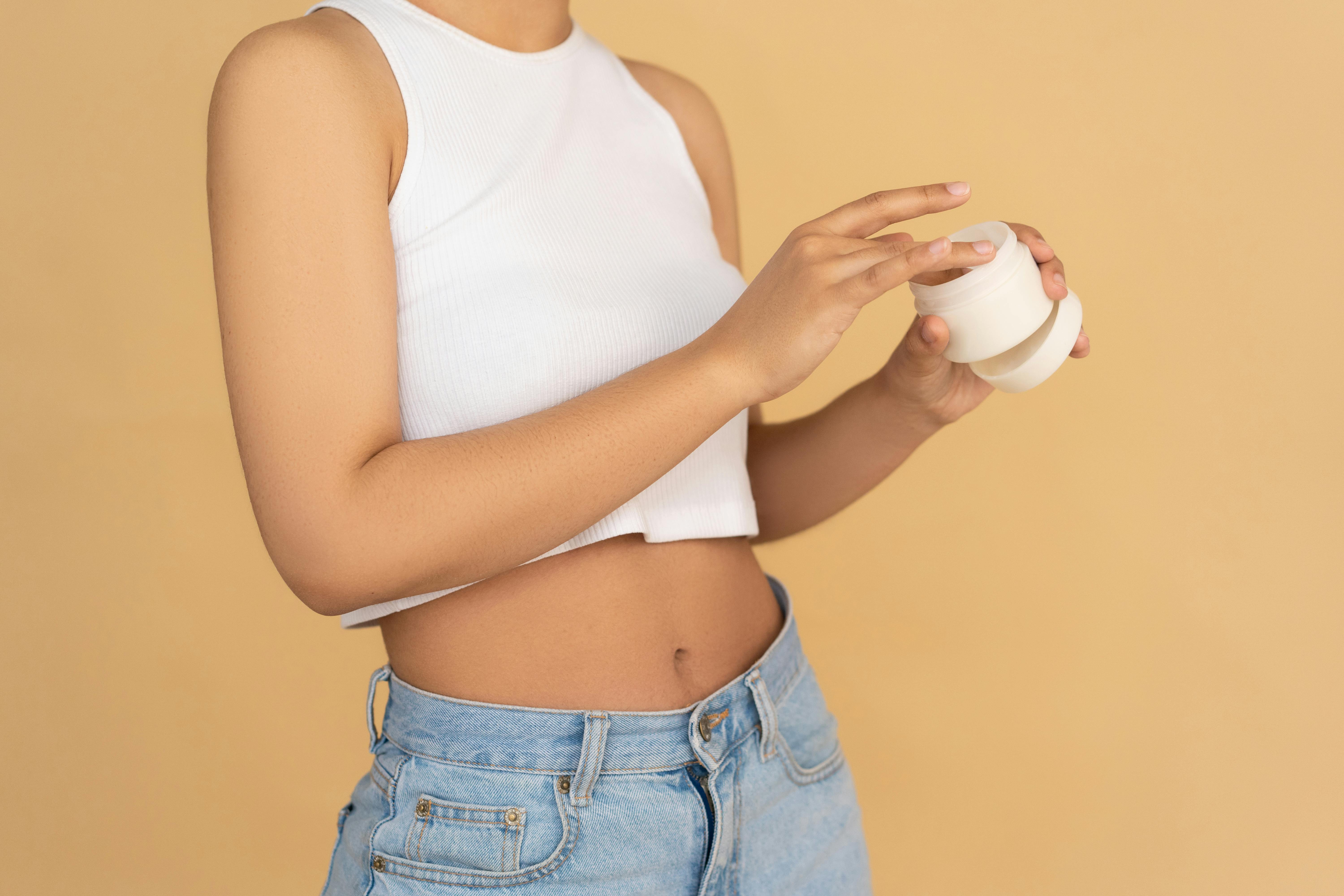
Turmeric (curcuma longa) contains curcumin and related compounds that provide antioxidant and skin-tone evening effects in lab studies. In DIY use, it’s best in tiny amounts to reduce staining risk.
Best for: Dullness, appearance of uneven tone; normal to oily skin types.
Quick Recipes
- Micro-Dose Paste: 1–2 pinches turmeric + 1 tsp yogurt or aloe gel. 5–7 min; rinse thoroughly.
- Glow Dab (targeted): Pinch turmeric + 1 tsp honey; apply as a thin film on dull areas for 5 min; rinse.
How to use: 1–2× weekly. Apply thinly to minimize yellow tint; follow with gentle cleanser if needed.
Cautions: Can stain towels/clothes; may cause irritation in sensitive skin—patch test.
5) Green Tea — Calm, De-Puff & Antioxidants

Green tea extracts are commonly used in skincare for their polyphenols (like EGCG). As a DIY rinse or mist, cooled green tea can feel calming and refreshing, especially after sun exposure (not a substitute for SPF).
Best for: Oily or combination skin; puffy mornings; skin that flushes easily.
Quick Recipes
- Cooling Rinse: Brew strong green tea; cool fully. Swipe with cotton or spritz as a toner after cleansing.
- De-Puff Compress: Chill tea bags; rest over closed eyes for 5–8 min.
- Clay-Tea Purify: 1 tsp cosmetic clay + 1–2 tsp cooled green tea; 5–7 min (don’t let clay fully dry).
How to use: As a rinse up to daily; masks 1–2× weekly.
Cautions: Tea can stain light fabrics. Discard tea within 24 hours if unrefrigerated.
6) Aloe Vera — Lightweight Soothing Gel
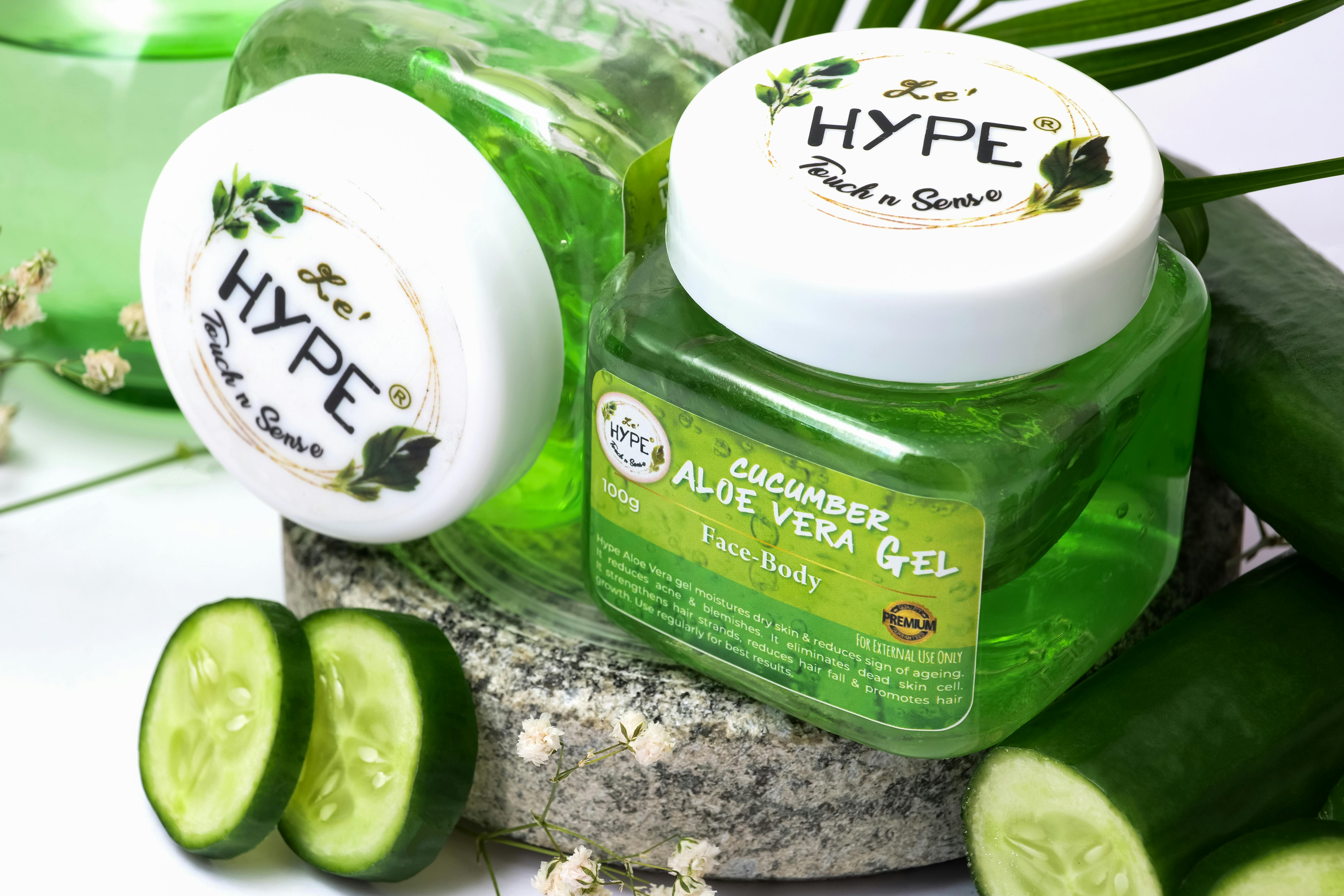
Aloe vera gel is a classic for a reason: it’s lightweight, cooling, and offers a soothing feel to stressed skin. If using fresh leaf, rinse away the yellow latex (aloin) to reduce irritation risk.
Best for: Normal, oily, combination, or easily irritated skin; hot weather relief.
Quick Recipes
- Pure Gel Soothe: Apply a thin film of fresh (well-rinsed) aloe gel; let sit 10 min; rinse or leave on if tolerated.
- Aloe-Honey Dew: 1 tsp aloe gel + 1/2 tsp honey for dewy feel. 10 min; rinse.
- Aloe-Tea Mist: 1 tbsp aloe gel + 30–40 ml cooled green tea; mix, strain into spray bottle; use within 24 hours.
How to use: As a light moisturizer under sunscreen; masks 2–4× weekly.
Cautions: Patch test; some are allergic to aloe. Store mixes cold and discard quickly.
7)Coconut Oil
Coconut oil is a natural skincare powerhouse, celebrated for its moisturizing, antibacterial, and antioxidant properties. It penetrates deep into the skin to hydrate and nourish, making it ideal for dry or sensitive skin. Coconut oil can be used as a daily moisturizer, lip balm, makeup remover, or as an ingredient in DIY masks and scrubs to promote glowing, healthy skin. Its natural antibacterial properties also help in soothing minor irritations and protecting the skin from environmental stressors.
